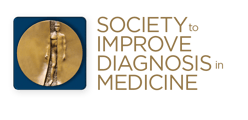Engaging Patients and family with Limited English Proficiency (LEP) in the Diagnostic Process: Designing, Implementing, and Assessing a Novel Coproduction Tool
Project Lead: Sigall Bell, MD
Project aim(s):
- Develop an (LEP) patient taxonomy for diagnostic breakdowns” from emerging themes in qualitative analysis of diagnostic breakdowns described by LEP patients in existing US (English & Spanish) datasets.
- Co-create with patients and families “Nuestro Diagnostico” (ND) = “OurDX” in English, a tool
informed by Aim 1 to engage Spanish–preferring patients and family in the diagnostic process,
and implement it in 4 BCH ambulatory clinics. - Assess the impact of ND/OurDX on implementation and safety outcomes including: a) total
submitted reports, b) number and type of patient-and-family-reported diagnostic breakdowns
(PRDBs); and c) stakeholder (patient, clinician, interpreter) experiences with ND/OurDX.
Narrative Description
We focused on the process of how to Engage Patients and families with Limited English Proficiency (LEP) in the Diagnostic Process through health information transparency. We began by analyzing the diagnostic error experiences of patients and families with limited English-language health literacy (LEHL) or disadvantaged socioeconomic position (dSEP) vs. their counterparts using a large national dataset (IHI survey). Then we applied our learnings to a novel online diagnostic process coproduction tool called OurDX. We implemented and evaluated the tool in 3 ambulatory clinics, comparing the experiences and safety opportunities among English-preferring patients/families and those who prefer a language other than English (predmonantly Spanish-preferring).
We measured contributing factors identified by patients who experienced a diagnostic error, The data analyzed included the diagnostic error experiences of patients and families with limited English-language health literacy (LEHL) or disadvantaged socioeconomic position (dSEP) vs. their counterparts using existing data.
The most common contributing factor identified by patients and families reporting a diagnostic error was not feeling listened to (69%)
Patients and families with limited English-language health literacy (LEHL) or disadvantaged socioeconomic position were significantly more likely to report additional unique (and actionable) contributing factors, including:
- Communication/coordination: lack of translator or language-concordant provider, no clear leader among clinicians, not understanding of follow-up plans
- Access: unable to afford or complete recommended tests/appointments
- Medical records: that are out of date or incorrect
Patients and families with LEHL or disadvantaged socioeconomic positions were more likely to report long-term emotional, financial, or relational impacts from diagnostic error.
In the second part of the project, we implemented OurDX, the online tool soliciting: patient priorities (with prompts and open-ended field), interim patient-reported history (with prompts and open-ended field), and potential patient-reported diagnostic process breakdowns. The result was to compare themes of patient-reported diagnostic process-related breakdowns (PRDBs) among patients who are English preferring vs. patients who prefer another language.
Together with the AHRQ grant efforts, we were able to reach >7300 patients with OurDX, a new tool to engage patients and families in the diagnostic process, including about 4% who used the tool and identified a language preference other than English. The SIDM seed grant enabled the targeted focus group to work with Spanish-preferring families to adapt the tool into Spanish and learn more about this population's diagnostic breakdown experiences.
Patients who preferred a language other than English were >5x as likely to report breakdowns with feeling heard. A total of 16% of other-language preferring patients reported their main concern was heard "not at all," compared to 3% among English preferring patients. In addition, participants who preferred a language other than English were more than twice as likely as their counterparts to report a diagnostic process breakdown.
Publications and Resources- Bell SK, Dong J, Ngo L, McGaffigan P, Thomas EJ, Bourgeois F. Diagnostic error experiences of patients and families with limited English-language health literacy or disadvantaged socioeconomic position in a cross-sectional US population-based survey [published online ahead of print, 2022 Feb 4]. BMJ Qual Saf. 2022;bmjqs-2021-013937. doi:10.1136/bmjqs-2021-013937
- Hart, Nicholas J; Bell, Sigall K; Gómez, Eva; Craven, Catherine K; Dong, Joe; Jordan, Patrick; Bourgeois, Fabienne. Experiences of patients and families with language preference other than English with a diagnostic engagement tool. In progress.
- Bourgeois F et al. Understanding and addressing equity gaps in patient and family engagement in the diagnostic process. In progress.
- Nuestro Diagnostico FAQs (posted on OpenNotes website) – accessible free of charge https://www.opennotes.org/ourdiagnosis/preguntas-frecuentes-de-ourdx/
Diagnostic quality problem type, failure, or category (symptoms, observed problems, gaps in performance) addressed by the intervention
- Failure to access the health care system or engage in the diagnostic process
- Failure in information gathering
- Failure in information interpretation
- Failure to establish an explanation (diagnosis)
- Failure to communicate the explanation to the patient
- Identifying/investigation/sharing diagnostic errors
Root causes/causative factors addressed by the intervention
- Patient-clinician interaction (includes patient and family engagement)
- Health information sharing and accessibility via health IT
Setting of the diagnostic quality improvement intervention
- Ambulatory medical care setting (e.g., clinic, office, urgent care)
